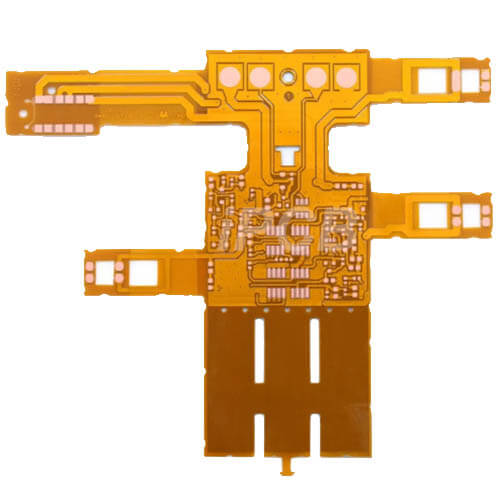What is FPC Flexible PCB? Flexible circuit boards can also be called "soft boards", which are printed circuits made of flexible insulating substrates. FPC Flexible PCB can provide high electrical performance, meet the design requirements of smaller and higher density installation, and help reduce the assembly process and enhance reliability. Today, let's introduce the types of FPC Flexible PCB.

There are many kinds of FPC Flexible PCB:
1) The bidirectional access flexible circuit is a single-sided flexible circuit. The purpose of manufacturing this circuit is to access conductive materials from both sides of the flexible circuit.
2) The double-sided flexible circuit is a circuit with two conductive layers, which are respectively located on two sides of the basic layer in the circuit; According to your specific requirements, the wiring pattern can be formed on two sides of the substrate sheet, and the wiring on the two sides can be connected with each other through the copper plated through-hole.
3) Multilayer flexible circuit is a combination of several single-sided or double-sided circuits with complex interconnections. Shielding technology and surface mount technology are often used in multi-layer design.
4) Rigid flexible circuits integrate the advantages of rigid printed circuit boards and flexible circuits. Circuits are usually interconnected through electroplated vias between rigid and flexible circuits.
One of the main advantages of FPC Flexible PCB components is that it can realize almost error free wiring and replace labor-intensive manual wiring. In addition, unlike rigid circuits, flexible circuits can also be designed into complex three-dimensional structures because they can be bent into various shapes. As the name implies, materials used in flexible circuits can be bent back and forth countless times, which means they can be used in highly repetitive applications, such as on print heads. When PCBA manufacturers need to consider the weight of products, flexible circuits are a good alternative to rigid circuit boards and conductors because their dielectric materials and conductor circuits are very thin. With the development of science and technology, people believe that in the near future, flexible circuits will become smaller and more complex, and assembly costs will become higher and higher. Therefore, for PCB practitioners, if they want to stand in a higher position in the future, they need to constantly understand, learn and master more knowledge about flexible circuits.
Precautions for using FPC Flexible PCB:
1) FPC Flexible PCB will be coated on the surface to effectively prevent oxidation. There are certain requirements for the environment during storage. The temperature should be controlled below 25 ° C and the humidity should be controlled within the range of 50% - 70%.
2) The FPC Flexible PCB has strong bending resistance, but the exposed part of the conductor is not suitable for bending, nor can it be bent directly on the through hole. The FPC ink type protective layer must not be bent at more than 90 ° C during assembly, nor can it be bent at 180 ° C, which may lead to wire breakage and other problems.
3) The stress concentration areas of FPC Flexible PCB, such as the covering film, the finger tip, and the corner of the shape, are easy to cause line breakage during the assembly process, so special attention should be paid to the use.
During the test, the high current spring sheet micro needle module can be used for connection and conduction, which can effectively transmit the high current and maintain a stable connection within the range of 1-50A; It can also handle small pitches, and ensure that pins are not jammed and pins are not jammed between 0.15 mm and 0.4 mm, so that FPC Flexible PCB testing can be carried out stably.